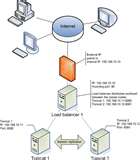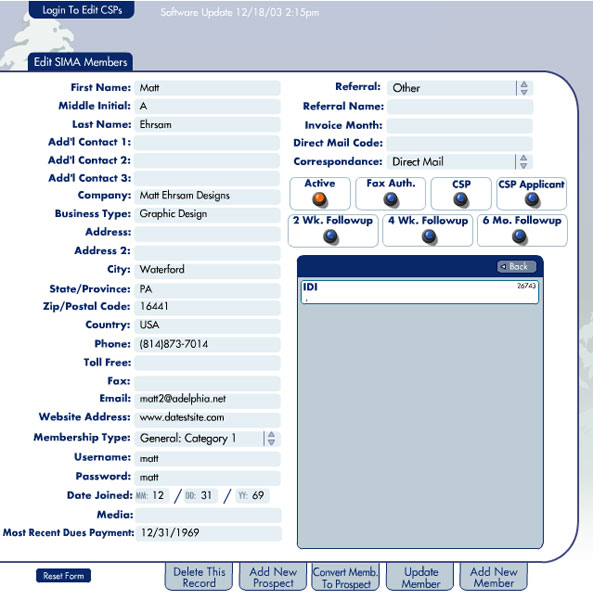Open Source Databases
Even as Linux has garnered support by all of the major commercial database vendors, the freely available open source databases have grown in sophistication and features. Below follows a partial list of some of the more popular of these.
Please Note, in addition to the listings below, many of the commercial database vendors have free "personal edition" or "single user" policies that allow their products to be used free of charge at home or in non-commercial applications. The goal of these policies to allow users to evaluate their software free-of-charge, and to allow developers to port their applications without making a large financial investment.
SQLite Embeddable SQL Database Engine (New Listing!)
SQLite Embeddable SQL Database Engine is a C library that implements an entire SQL server. This allows application programmers to embed an SQL server directly into thier application. Note that this is not a client library, and it cannot be used to contact an SQL server.
Implements most of the SQL 92 dialect.
Small footprint; 25K lines of code.
Sources in the public domain; no license.
McKoi SQL Database
The McKoi SQL Database is written entirely in Java. Supports transactions, referential integrity, triggers, indexes, Java-specific enhancements. Supports multi-threaded, multi-client operation; embedable. Released under the GPL license. This is probably the most advanced open-source pure-Java database out there.
SAP DB
The SAP DB is the liberation, under the GPL/LGPL license, of the SAP AG database. This is a major enterprise-class database.
HypersonicSQL
hsql is a small, (100KB) fast, embeddable relational DB written entirely in Java. Supports only a subset of the SQL standard. A 'stable' version now available. Modified BSD license.
PostgreSQL
PostgreSQL is a powerful and complete SQL implementation that rivals commercial databases such as Oracle. This database (along with MySQL) is the leading GPL'ed database system for the GNU/Linux & BSD platforms. Commercial support is available from a company formed by the leading Postgres developers.
Fully Transactional, with full ACID (Atomicity, Consistency, Isolation and Durability) properties. Seven different levels of locking for consistent queries and updates.
Tremendous performance improvements in Version 7.0
Support for Triggers
Support for user defined data types.
Support for stored procedures. These can be defined in a variety of ways, including an internal language, or very generally as a shared library, written in any language, linked into the Postgres server.
On-Line Backups
Multiple index type (b-tree, hash, etc.)
Commercial ODBC drivers from OpenLink
Non-commercial ODBC drivers
The Postgres HOWTO provides an extensive reference for a large number of Postgres facts and tools.
MySQL
MySQL from MySQL AB is, with Postgres, one of the most popular GPL'ed databases for the GNU/Linux and BSD platforms.
Commercial sales, support and training is available from NuSphere. They also do contract programming and infrastructure enhancements and feature additions for MySQL.
Commercial support from AbriaSoft.
Rudimentary support for table locking recently added.
Complex but powerful user access control mechanism.
Multi-threaded for parallel queries
Includes ODBC, Perl, C, Java, Tcl, Python API's
InterBase
The InterBase SQL server from InterBase Corp. is the well-known InterBase database released under an open source (MPL) license. In case you are wondering why you haven't heard of InterBase before, note that they were recently spun off from Inprise, which is, of course, the new name for Borland.
CQL++
Machine Independent Software offers the CQL++ DBMS. Originally developed originally as a full-featured commercial software product, it is currently available under several licenses, including the GNU GPL. (The free version is under GPL, non-free, non-GPL versions are available at reasonable cost.) The feature list mentions the following:
Transaction support, including commit, rollback, nested transactions, logging, failure recovery.
ANSI 1989 Level 2 SQL and ODBC Level 1 API support
ISAM or B-tree access
Unlimited number of cursors
BLOB (Binary Large Object) Support
Optimistic concurrency control with shared read locks.
Preprocessor for embedding SQL in C++
Gadfly
Gadfly is a small, portable database system written entirely in python and specifically intended for python programmers. Database files are portable from Win95 to Linux. Source code freely available, and is commercially supported by Chordate Systems.
GigaBASE and FastDB
GigaBASE (US Mirror) and FastDB (US Mirror) are memory & file-based databases with an SQL-like query language. Because they compile into an application, they avoid most of the DB management problems of client-server. BSD-like license.
GNU SQL
GNU SQL from Russia ... project development seems to have stalled in 1998.












